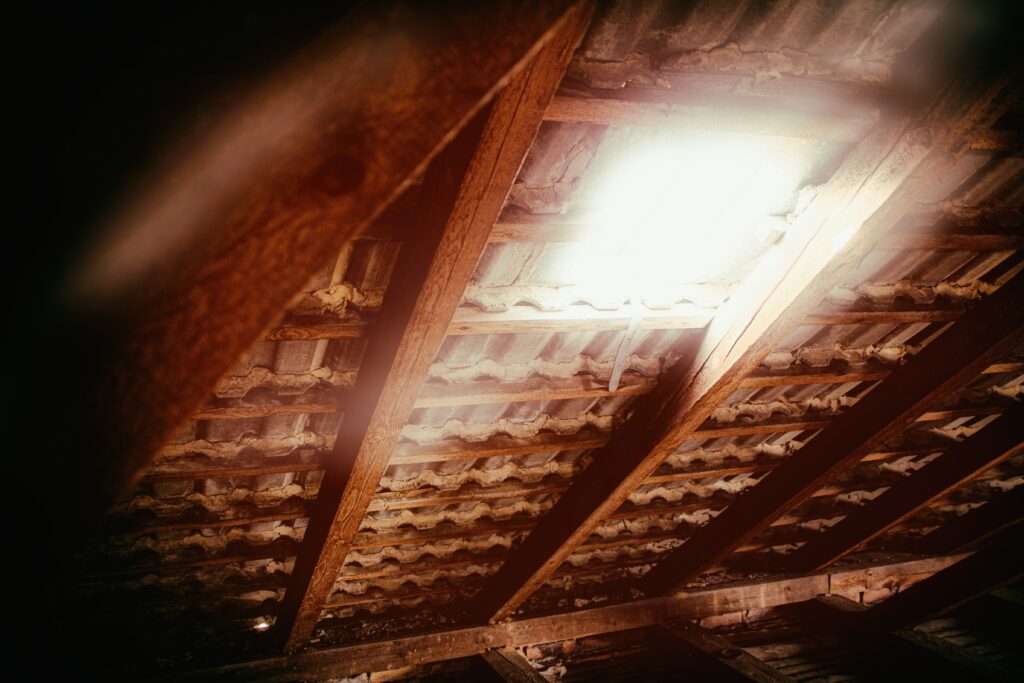Can You Over Insulate Your Attic?
Many homeowners aim to maximize their home’s energy efficiency by ensuring their attic is well-insulated. No matter the type of insulation you use, you should always strive to have an ideal R-value that works with your location and your home’s needs.
However, is it possible to over insulate your attic? While under insulated attics are more common, it is still possible to have negative impacts from over insulating your attic.
This article will explore the importance of attic insulation and what can happen when you have too much in your attic. We’ll also help you determine if you’ve over insulated the attic and how to fix it to maintain a healthy, energy-efficient home.
What is the Importance of Attic Insulation?
Insulating your attic is one of the most affordable ways to improve your home’s energy efficiency. Plus, you will reduce energy bills, and enhance the overall comfort level of your living space. It’s crucial for maintaining consistent temperatures throughout your living space. Reducing the workload on your heating and cooling systems will also extend their lifespan.
You reduce your carbon footprint by using less energy to heat and cool your home. In this way, insulation can also benefit the environment.
However, it’s not just about adding insulation; it’s also essential to have the proper amount of insulation.
How do Attics Work?
Understanding how attics and attic insulation work is the best way to ensure it is properly insulated without going overboard. There are two main attic designs, and they each work differently. Knowing what type of attic you have in your home will help you choose the best insulation solution.
How Vented Attics Work
The most common type of attic construction is the vented attic. In these attics, insulation is placed along the ceiling plane of your home, which is also the attic floor. The insulated areas of your home, as in below the attic floor or ceiling plane, are referred to as “conditioned space.”
Vented attics have vents located around the eaves of the roof. Vents are necessary for allowing the attic air to circulate freely with the outside. Circulation is critical for two reasons.
In winter, vents prevent the inside warm from heating the roof and melting the snow. When snow on the roof melts, it will then run down into your gutters, where it will refreeze and form ice dams.
During the summer, ventilation allows excess moisture from inside of your home and the heat from the attic to escape outside. The additional side benefit of this ventilation is that it protects your shingles against heat damage.
How Sealed Attics Work
Sealed attics have the insulation installed on the roof deck, rather than your home’s ceiling plane. This configuration makes the attic space a part of your home’s “conditioned space.”
Sealed attics aren’t as common as vented attics. However, they can make your home more energy efficient if there are HVAC ducts passing through. Ducting passing through a conditioned space is more efficient because there is less thermal transfer to the air in the attic.
A disadvantage to sealed attics is there is minimal protection against shingle damage from heat build-up than vented attics. For this reason, you will see homes with a double roof that incorporate ventilated air space directly above the insulation.
How Can I Tell If My Attic Has Too Much Insulation?
R-value is a number that’s applied to insulation that indicates how good it is at resisting the flow of heat through it. Higher numbers mean better thermal resistance, but it’s not always clear what value you should aim for.
Still, one of the best ways to work out if you have too much insulation is to look at your R-value. In California, an R-Value of around 30 is considered an optimal level of insulation for attics.
A value of R-30 can deliver a decent amount of insulation to keep your home comfortable, without having to deal with the drawbacks of having too much. The Environmental Protection Agency (EPA) recommends an R-Value of 25 – 38 for homes in Zone 3, while The California Department of Energy’s 2019 Building Envelope regulations suggests you aim for R-22.
We don’t recommend going over R-38 for a couple of reasons.
The Law of Diminishing Returns
This is an economic principle that can be applied to attic insulation as well. The more insulation you pile on, the better it will be, but only up to a point. Eventually, the extra insulation you invest in will result in little to no improvement to the conditions inside your home, and it can even become a hindrance.
Insulation can reduce energy consumption, but you need to consider the costs of the insulation versus the amount of money it will save you over time.
In short, you can have too much of a good thing when it comes to an investment in insulation. If you’ve achieved an R-Value of 38 or less, additional insulation is not worth it.
Instead, consider alternative measures to reduce energy loss, such as installing a radiant barrier in the attic, or maybe start work on making your crawlspace more energy efficient.
Poor Ventilation
Attic ventilation is critical to maintaining your attic in good condition. Without it, your attic is at risk of moisture, mold, and mildew problems.
Stuffing too much insulation into the attic space might block the vents and reduce your attic’s ability to efficiently circulate air. Of course, this will depend on the type of insulation material you use. Always be mindful of the vents when installing any type of insulation.
Mold is a major issue that cannot be ignored, so if you suspect your ventilation is not up to a high standard and you are worried about mold and moisture, consider calling a professional attic service for an attic cleanup and an insulation inspection.
Make Sure Your Ventilation is Properly Installed
Whether you have cellulose, fiberglass, or rock wool, how well your insulation is installed will have a significant impact on its ability to resist heat flow.
Any gaps or variations in thickness can create hot and cold spots throughout your home. These will increase the amount of work your HVAC has to do to keep the temperatures stable.
A professional attic insulation service can assess your property and tell you the right amount of insulation you will need to achieve optimal efficiency. Don’t let poor insulation increase your heating bills. Learn how to reduce heat loss so you can save money on energy bills by calling Attic Pros today.

